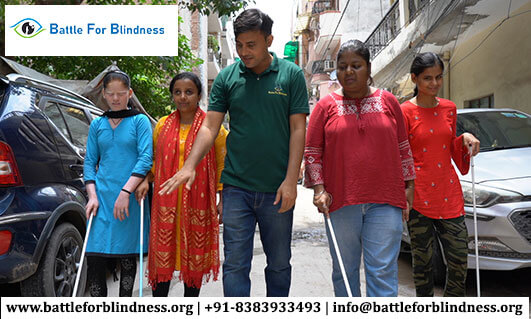
Visually impaired students face unique challenges in educational settings, often encountering barriers that can hinder their academic success. Despite advances in technology and growing awareness around inclusivity, many obstacles remain that affect access to quality education, equal opportunities, and overall learning experiences. Here, we’ll explore some of the primary challenges visually impaired students face and discuss potential solutions to promote a more inclusive educational environment.
1. Limited Access to Accessible Learning Materials
A significant barrier for visually impaired students is the lack of accessible learning materials. Textbooks, handouts, and visual aids are often not available in Braille, large print, or audio formats, making it difficult for these students to keep up with their peers. Although digital resources and assistive technologies are helping to bridge this gap, access to these resources is still limited in many educational institutions.
Solution: Schools and educators can work to ensure that all learning materials are available in accessible formats. Partnering with organizations that specialize in converting educational content into Braille or audio can be a valuable step towards inclusivity.
2. Inadequate Assistive Technology
Assistive technology like screen readers, Braille displays, and magnification devices are essential for visually impaired students to access digital content and participate in classroom activities. However, these tools can be costly, and not all schools have the funding or resources to provide them. This can put visually impaired students at a disadvantage, as they may struggle to access the same information as their peers.
Solution: Educational institutions should advocate for funding and grants to provide necessary assistive technology for visually impaired students. Additionally, ensuring teachers and students receive training on how to use these tools effectively can enhance the overall learning experience.
3. Lack of Specialized Support and Trained Staff
Teachers and school staff may not always have the training or resources to support visually impaired students effectively. Without adequate knowledge of how to adapt lessons, provide accessible materials, or use assistive technology, educators may unintentionally contribute to the challenges these students face.
Solution: Schools should prioritize training for educators on how to work with visually impaired students. This includes understanding their unique needs, learning how to use assistive devices, and implementing inclusive teaching methods. Specialized support staff, such as vision specialists, can also provide valuable assistance.
4. Social Isolation and Limited Peer Interaction
Visually impaired students can sometimes feel isolated or excluded from social interactions due to misunderstandings or a lack of awareness among peers. This social barrier can impact their emotional well-being and lead to feelings of loneliness or low self-esteem, further hindering their academic performance.
Solution: Schools can promote awareness and empathy by educating all students about visual impairment and encouraging inclusive activities. Peer mentoring programs and social skills development workshops can help visually impaired students build connections and engage more fully with their classmates.
5. Challenges with Mobility and Navigation
Navigating school environments can be difficult for visually impaired students, particularly in larger or unfamiliar spaces. Challenges like locating classrooms, navigating hallways, or accessing school facilities can create anxiety and impact their ability to attend classes or participate in extracurricular activities.
Solution: Schools should consider implementing mobility aids, such as tactile guides, audio cues, or digital navigation tools to help visually impaired students move safely and confidently around campus. Training staff and students on how to assist visually impaired peers with navigation can also foster a more supportive environment.
6. Standardized Testing and Assessment Barriers
Standardized tests are often not designed with accessibility in mind, making it difficult for visually impaired students to demonstrate their knowledge and skills. These assessments may not be available in Braille or audio formats, and accommodations like extended time or alternative formats are not always provided.
Solution: Educational authorities should work towards making standardized testing accessible to all students, offering accommodations that allow visually impaired students to perform to their best ability. Teachers and administrators should be proactive in advocating for accessible testing options and accommodations.
7. Limited Access to Higher Education Opportunities
Visually impaired students may face additional challenges when pursuing higher education, such as lack of accessible resources, difficulty with standardized entrance exams, and limited support services. These barriers can discourage visually impaired students from continuing their education and limit their career prospects.
Solution: Colleges and universities should ensure their campuses, resources, and services are accessible to visually impaired students. Providing accommodations, assistive technology, and dedicated support services can help bridge the gap and encourage more visually impaired students to pursue higher education.
Conclusion
While visually impaired students face a range of challenges in educational settings, there are many ways to address and overcome these barriers. By increasing awareness, advocating for accessible resources, and promoting inclusive practices, educators and institutions can help create a learning environment where visually impaired students have equal opportunities to succeed. With continued efforts towards accessibility and inclusivity, we can move closer to a future where all students can thrive academically, regardless of their visual abilities.





